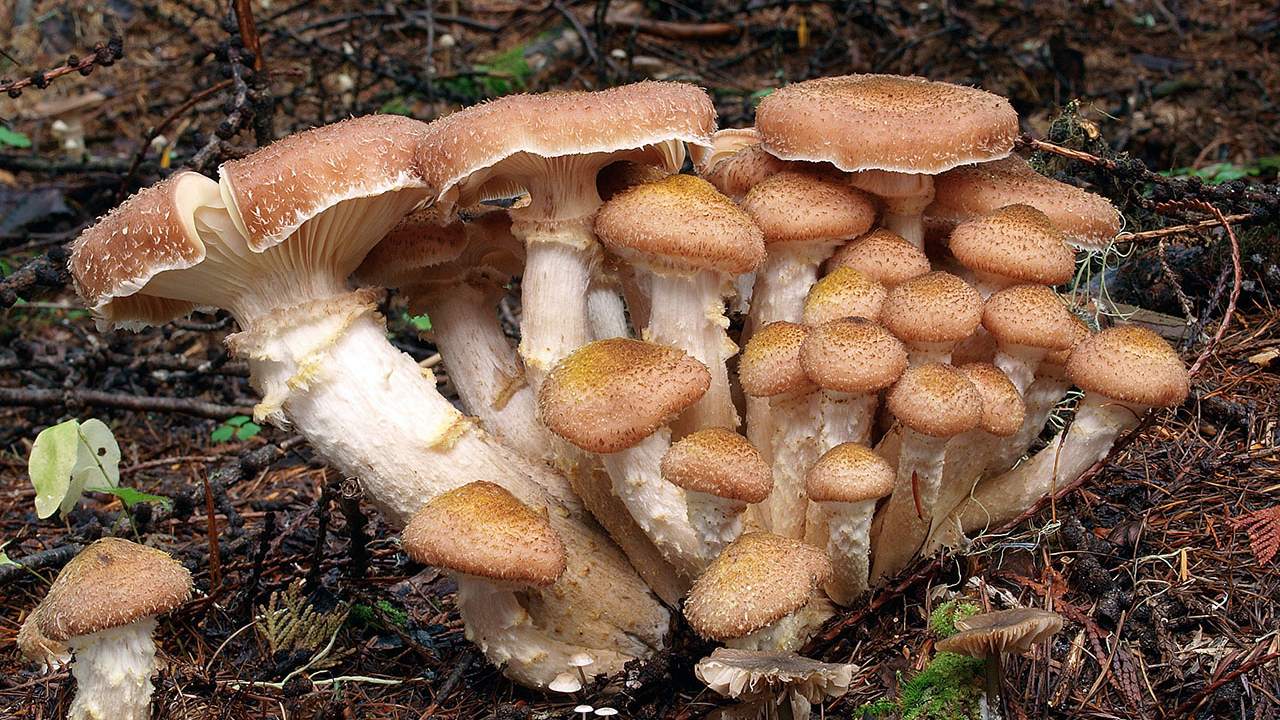The secret behind why Armillaria ostoyae is so invincible and powerful, as well as being the world’s largest organism, may have finally been revealed. Recent research has discovered that Armillaria ostayae has a shield as strong as hard plastic inside, which protects it from external influences.
A group of mushrooms, with huge webs of black tentacles stretching for miles under the ground, honey mushroom also known as armillariais home to some of the largest known organisms on our planet.
Located in Oregon, it covers an area of 3.7 square miles with isomorphous tentacle mass and is estimated to weigh approximately 7,500 to 35,000 tons. An 8,500-year-old Armillaria ostoyae For example, the world largest organism may be presumed. On the outside, this mind-blowingly large organism looks like no more than cute little independent mushrooms.
It is unaffected by ordinary fungicides and can survive for years without feeding.
Don’t look so cute and harmless from the outside; Armillaria, a pathogenic fungus that feeds on trees almost like a vampire; Depleting the life of 600 types of woody plants, destroying vegetation and providing farmers with millions of dollars in damage In fact, it is an extremely dangerous species in terms of property. The reason why this parasitic fungus is so large is that it is partially robust. This gigantic strain is so robust that ordinary fungicides normally used to get rid of fungi, let alone kill Armillaria, which are incredibly resistant to many methods of biological control, make it even worse. its growth It can even encourage. In addition, Armillaria can survive for quite some time without any form of feeding.

Debora Lyn Porter, a mechanical engineer at the University of Utah and her colleagues, who researched what makes mushrooms so invincible and powerful, and her colleagues, in the article they published “In the absence of living hosts, these networks of mycelium and rhizomorph decades They are found to remain dormant and become active again as new hosts return.” made statements. Using chemical analysis, mechanical testing, and modeling to closely examine Armillaria ostayae, the team compared lab-grown specimens of tentacle-like rhizomorphs with wild specimens; from two examples only wild mushroom It can protect the more sensitive branches inside from both chemicals and mechanical forces. a layer of shield He concluded that it produces rhizomorphs with
RELATED NEWS
Bees Making Propolis Have Been Viewed So Closely For The First Time Thanks to a Special Camera Inserted into the Hive
Stating that this outer layer is as strong as a hard plastic, mechanical engineer Steven Naleway said that the layer is good for the natural world. quite strong underlined that. This layer, darkened by melanin, a pigment known to provide various benefits to fungi, such as binding calcium ions that help neutralize toxins such as acids from insects, also has much smaller pores and pores than seen in lab-grown rhizomes. no weak spots was observed to have a more consistent structure. Naleway on the matter “If you’re going to have some kind of human biocontrol, you have to fight this calcium and better penetrate this outer surface” recorded as.
Source :
https://www.sciencealert.com/researchers-have-discovered-what-makes-one-of-the-world-s-largest-organisms-so-tough
